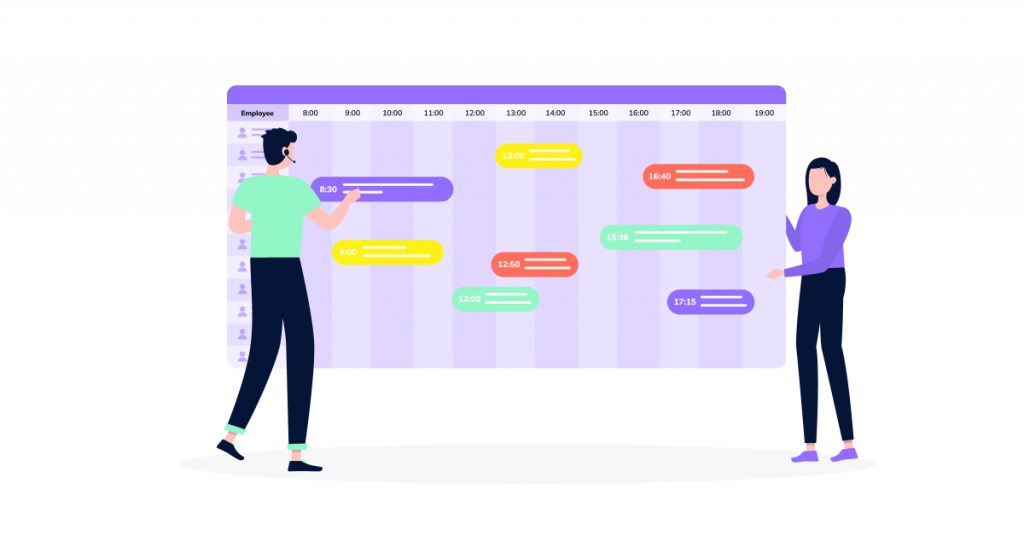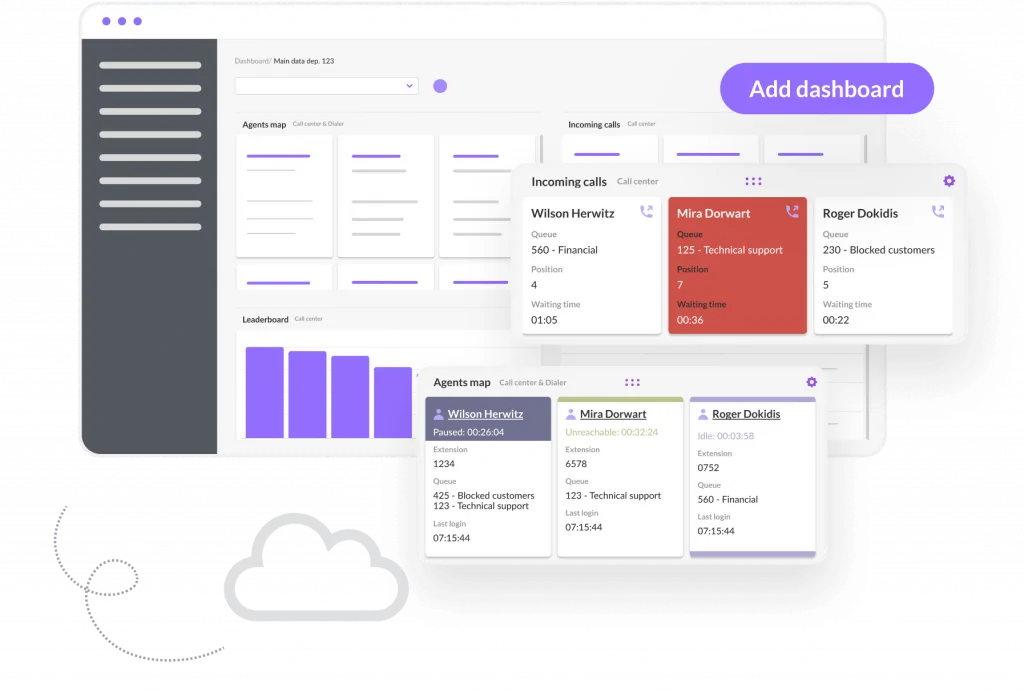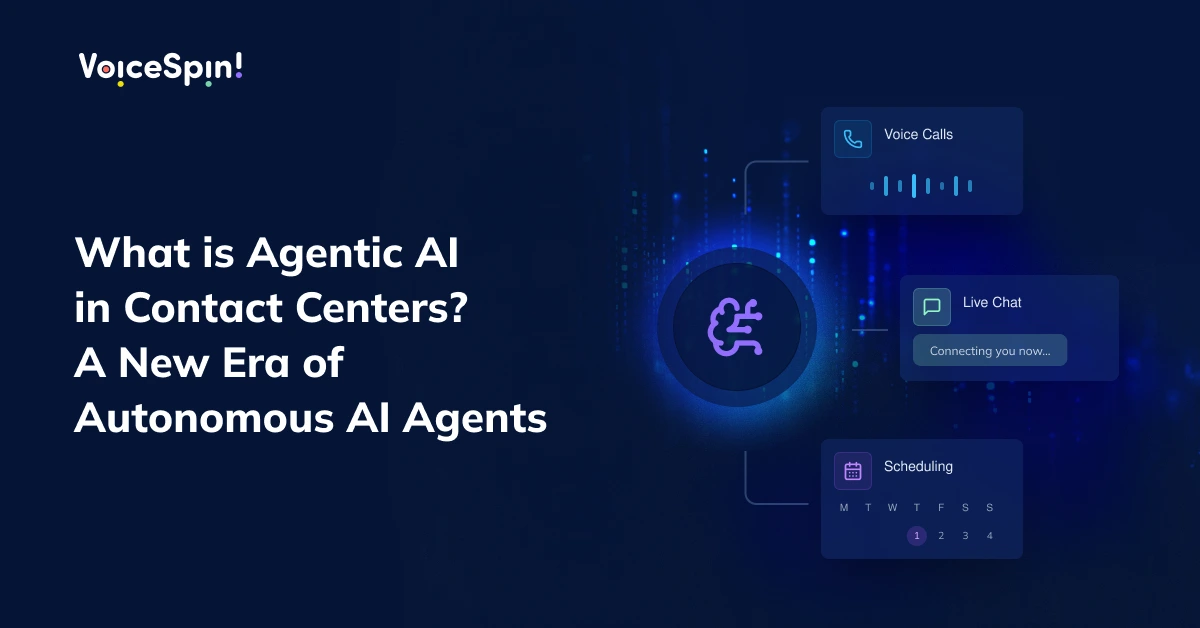Managing your contact center workforce effectively is essential to ensuring your contact center is efficient and cost-effective while both customers and agents are satisfied. That’s where workforce management comes into play. Although the process can be pretty challenging for managers, with the right workforce management software and best practices, you can manage your contact center team effectively and confidently, ensuring operational efficiency and excellent service delivery.
In this blog, we’re going to explore the key components and benefits of call center workforce management along with some WFM best practices that leading contact centers are using and that you can implement to improve your own WFM strategy.
What is Contact Center Workforce Management?
Basically, workforce management encompasses all the internal processes involved in managing your contact center employees. Proper workforce management is meant to ensure that you have just the right number of skilled contact center agents available when and where you need them to meet your customer needs and maintain operational efficiency.
Due to the unique challenges faced by contact centers and call centers when it comes to managing their staff, many rely on sophisticated workforce management software tools to help them better forecast staffing needs based on anticipated call volumes and assign the right number of reps at the right times to ensure efficient workload distribution among agents, high levels of engagement and productivity, and customer satisfaction.
All in all, workforce management in contact centers is all about figuring out how to meet customer demand and maintain your SLAs (Service Level Agreements) without over- or understaffing.
The Key Components of Call Center Workforce Management
These are the components involved in a workforce management cycle:
Forecasting
Fluctuations in call volumes – whether expected (such as when you’ve launched a promo campaign) or unexpected (like a system failure) – are common in call centers. If you don’t have enough reps to handle the increased call volume, that may lead to longer wait times for inbound callers, which often becomes a frustrating experience for them. In fact, according to a Software Advice study, waiting on hold for even one minute feels like too much for over 60% of consumers. On the other hand, overstaffing leads to inefficient resource utilization, poor employee morale, decreased motivation, and increased operational costs.

Accurate forecasting helps contact center managers better predict call volumes, future workload, and staffing needs so they can plan ahead. Here are some of the factors that you should consider:
- Historical data, trends, and patterns
- Upcoming holidays or special events
- New product or service launches or updates
- Upcoming promo campaigns
- Equipment or service failures due to weather conditions
Agent scheduling
Once you’re done predicting the future demand, you need to create agent schedules taking into account anticipated call volume spikes and periods of lower demand. That will help you prevent both understaffing and overstaffing. E.g., if you’ve just released a new product, you may need to schedule more reps to handle the increased call volume as your team is likely to receive more inbound calls.
If you are running a remote call center and using a virtual call center platform to manage your remote staff, you can, of course, enable greater scheduling flexibility. Whatever the case, when agent scheduling is done right, you’ll be able to handle customer requests quickly and efficiently, maintain service levels and customer satisfaction, and maximize cost efficiency.
While scheduling can be done manually, using a workforce management solution and automating part of the process can save you time and effort.
Assigning agents
After you’ve scheduled agent shifts in accordance with your forecasted demand, you need to assign your reps to shifts in a way that will help you maximize productivity and agent performance while also avoiding excessive workload and burnout. When assigning your team members to shifts, make sure to consider your agents’ experience, expertise, and soft skills. Besides that, take into account agent shift preferences – that will help them maintain a better work-life balance and maintain high productivity levels.
Intraday management
Despite thorough planning, things don’t always go as expected. You may face an unexpected spike in inbound call volume caused by external reasons out of your control or workforce shortage due to poor schedule adherence or absenteeism – all affecting your team’s ability to maintain service level. That’s why intraday management is critical in call center workforce management.
By constantly monitoring real-time data, you can make timely adjustments to agent schedules and allocate more staff to meet higher-than-expected demand to ensure your service levels are being met and that you have enough reps to handle an increased call volume without overloading your team.
Performance management
Performance management is an important part of WFM. By regularly tracking metrics and KPIs like Average Handle Times (AHA), First Call Resolution (FCR) rates, schedule adherence, occupancy rate, shrinkage percentage, and others, you can assess agent performance and the efficiency of your call center operations. On top of that, based on this data, you can identify improvement opportunities and make more data-driven decisions to ensure better forecasting and scheduling.
Benefits of Efficient Workforce Management for Call Centers and Contact Centers
Efficient workforce management offers several key benefits for call centers and contact centers – and even more if you use robust workforce management software and consistently follow WFM best practices.
Simplified contact center management

Manually forecasting call volumes and creating agent schedules using spreadsheets often becomes a time-consuming and tedious process for call center managers. That is particularly the case with large call centers and omnichannel contact centers. Workforce management software can automate these tasks and streamline the entire process, helping you reduce the time it takes to forecast and schedule your reps and eliminating the need to do it all manually.
Improved customer service experience
Today’s consumers have higher service expectations than they did in the past. They expect to be provided with accurate and helpful information regardless of who answers their calls. But most importantly, they expect to be helped quickly (or almost instantly) when they reach out to customer support.
A Salesforce study recently found that 83% of consumers expect to interact with someone immediately when they contact a company. Accurate staffing ensures that there are always enough agents to handle customer inquiries quickly. It also helps reduce wait times for callers and the number of abandoned calls and maintain your SLAs, improving the overall customer experience.
Increased job satisfaction
Poor workforce management may lead to understaffing, which creates additional pressure for agents, impacting their well-being and job satisfaction and eventually leading to increased burnout. Not only does burnout negatively affect employee productivity and increase call avoidance, but it can also lead to even higher turnover, which has always been traditionally high in the call center industry. According to a QATC (Quality Assurance & Training Connection) study, the average call center agent turnover rate ranges between 30%-45%, higher than in many other industries.
On the other side, overstaffing may result in lower motivation and engagement, which also negatively impacts job satisfaction. With workforce management software, you’ll be able to predict demand more accurately and determine the optimal number of agents to match the call volume. And with predictable schedules and manageable workloads, your reps don’t have to work beyond their capacity, helping you improve job satisfaction and retention.
Better operational efficiency
Efficient workforce management also helps call centers ensure better operational efficiency and cost management since the way you schedule and manage your human resources directly impacts your operating budget. With more historical data and greater forecast accuracy enabled by workforce management software, you’ll be able to allocate the right number of agents and prevent labor resources from being wasted due to overstaffing, allowing you to avoid operational overhead.
Moreover, since workforce management helps you retain agents, that allows for additional cost-saving opportunities. According to Harvard Business Review researcher Keith Ferrazzi, it costs between $10,000–$20,000 to replace a call center agent.
Call Center Workforce Management Best Practices
Let’s now take a look at some of the best practices and strategies you can implement to improve and optimize your call center workforce management:
Forecast call volume and schedule accordingly
Efficient call center workforce management starts with accurate forecasting. Using advanced WFM tools with predictive analytics capabilities enables you to better forecast call volumes based on historical data and past trends and schedule your reps accordingly for each shift. As we’ve already mentioned above, besides past trends, you should take into account all the factors that can impact your future call volumes, such as seasonal call volume fluctuations or upcoming promo campaigns.
Allow for flexible scheduling options
Giving your agents greater flexibility and more control over their scheduling is an excellent way to improve your workforce management. Today’s employees highly value work-life balance. In fact, according to a recent study by Hays, work-life balance is more important than pay for 56% of employees. Additionally, the same study revealed that 41% of employees believe having varied working hours would make maintaining a healthy work-life balance easier.

Offering flexible scheduling options to your reps based on their individual preferences will help you maintain schedule adherence while allowing your team to achieve a healthier work-life balance and greater job satisfaction. Some advanced WFM solutions even enable agents to select their own availability and easily control their schedules.
Account for the shrinkage
Consistently monitoring the shrinkage rate is an essential part of call center workforce management. Call center shrinkage refers to the percentage of time agents are not available to handle customer calls during their scheduled hours due to breaks, team meetings, training sessions, and other factors. The average shrinkage rate within call centers normally falls between 30-35%. If shrinkage time isn’t tracked and taken into account in your forecasting, your call center might be understaffed and your reps may become overwhelmed, resulting in increased burnout and lowered productivity.
Ensure better schedule adherence through workplace culture
Ensuring your team members adhere to their assigned schedules is essential to meeting your service level goals. While flexible scheduling is one of the ways to improve schedule adherence, you can also do it through cultivating a positive workplace culture where everyone feels cared for, valued, and appreciated. The Eagle Hill Consulting Workplace Culture survey actually revealed that workplace culture strongly impacts employee performance and their commitment to an organization. Not only does a supportive workplace culture improve adherence, but it can also boost employee satisfaction, increase engagement, and reduce turnover.
Improve scheduling by cross-training agents
While implementing skill-based routing that assigns customers to agents with the right skills most relevant to their needs is an effective way to improve your FCR rates and maintain high service quality and customer satisfaction levels, that might not always be the best strategy in cases of unexpected call volume spikes or sudden staffing shortages. Make sure to cross-train your agents so that they can handle different types of inquiries when needed without sacrificing your service quality.
Eliminate the reasons for call avoidance
Call avoidance is a widespread issue in the call center industry. It refers to all the strategies your reps employ to intentionally avoid handling customer calls, such as taking excessive breaks, transferring calls to other agents, placing customers on hold until they terminate the call, or engaging in after-call work for longer than needed. If your agents intentionally avoid customer calls, that ultimately means that even though you have enough reps scheduled during the shift, they may not be serving your customers well. And that may lead to longer wait times for callers, an increased number of abandoned calls, and reduced Customer Satisfaction Scores (CSAT).
That is why it’s important to reduce call avoidance to ensure your call center operates efficiently. While there may be various reasons causing call avoidance (like poor team morale, lack of knowledge, or personal issues agents are facing), it can also be caused by excessive workload due to understaffing. Make sure to find the root causes and timely address them.
Leverage real-time analytics
Leveraging real-time reporting and analytics is one of the great ways to streamline your contact center operations and improve workforce management. By monitoring agent availability, call volumes, service level, and call queue statistics in real time, you can make swift adjustments in schedules and assignments in real time in response to call volume fluctuations and avoid the negative impact of long wait times and call abandonment.
Optimize Your Workforce Management with VoiceSpin Contact Center Software
Efficient workforce management is the foundation of running a successful call center, all while keeping both your agents and customers satisfied. With the right workforce management solution, you can do it smoothly and much more efficiently, automating part of the process and optimizing your agent schedules to ensure greater operational efficiency of your call center.
But efficient workforce management isn’t only about accurately forecasting and scheduling your reps – it’s also about empowering them to do their jobs well with advanced call center technology. VoiceSpin offers all the features your customer-facing team would ever need to handle inbound calls efficiently and deliver excellent service experience to customers. That includes ACD, custom call routing, IVR (Interactive Voice Response), call queuing, queue callbacks, and other inbound call management features.
Additionally, you can leverage omnichannel contact center software to support your customers across various digital communication channels like live chat, social media, WhatsApp, Telegram, and other instant messaging apps. Besides that, VoiceSpin offers powerful auto dialing solutions for outbound sales teams, enabling them to maximize sales conversions through the dialer’s AI capabilities. And with real-time monitoring, advanced reporting, and analytics features, managers can make smarter forecasting and staffing decisions and improve their call center operations.

Book a demo call now to see VoiceSpin contact center software in action and learn how it can help you optimize your workforce management.





 +18889082995
+18889082995
 +442036084160
+442036084160
 +97237237006
+97237237006